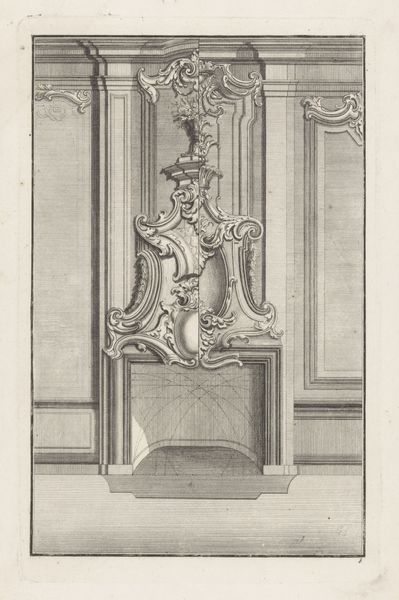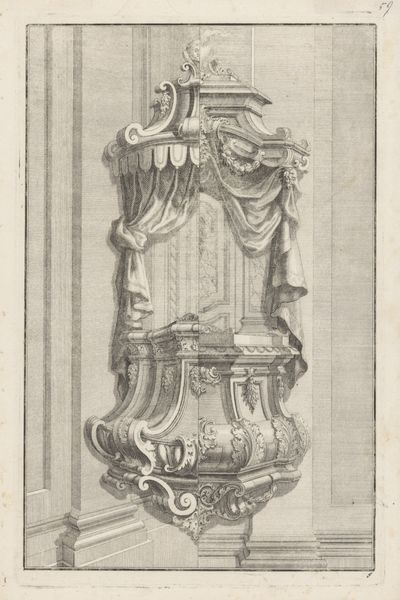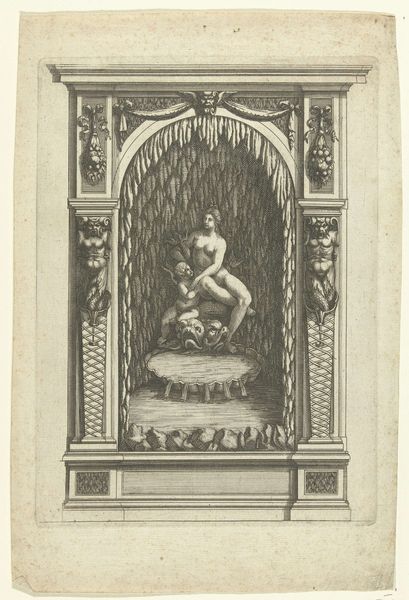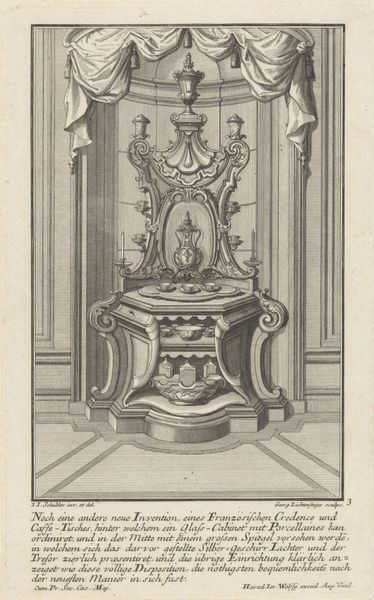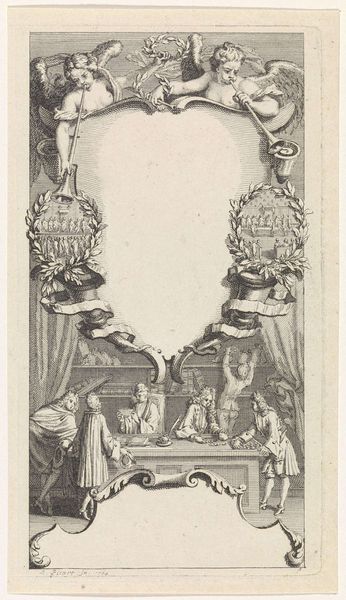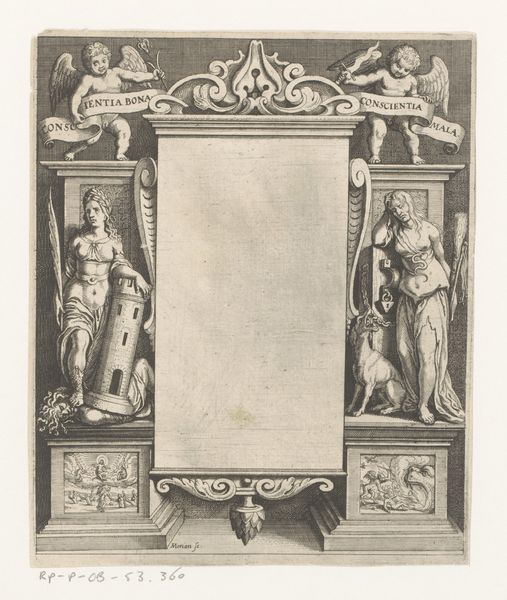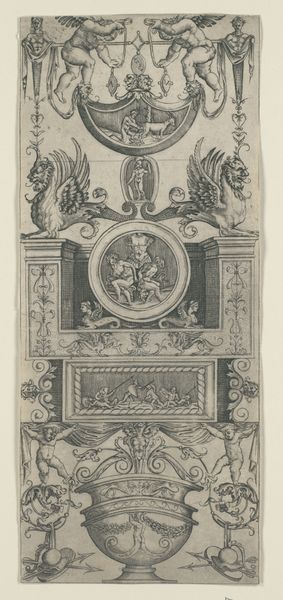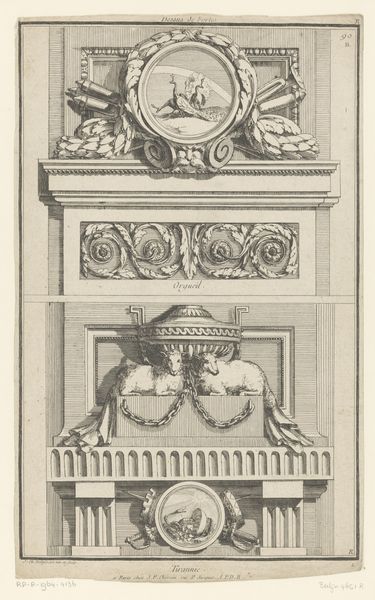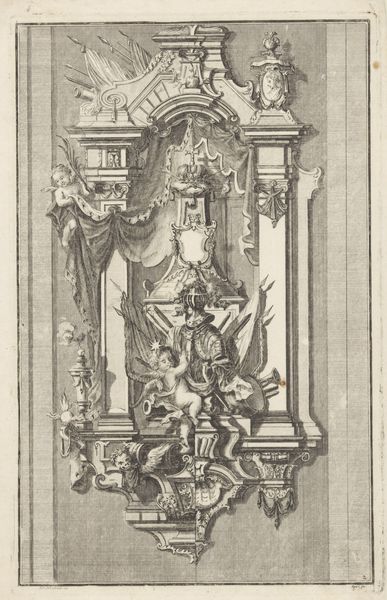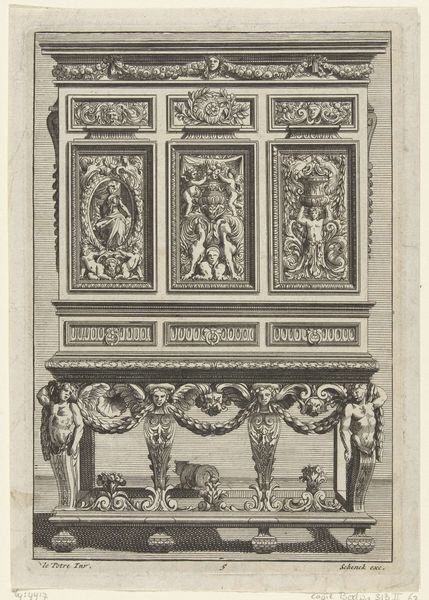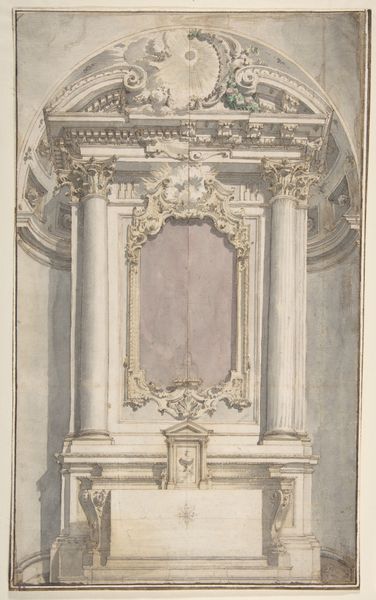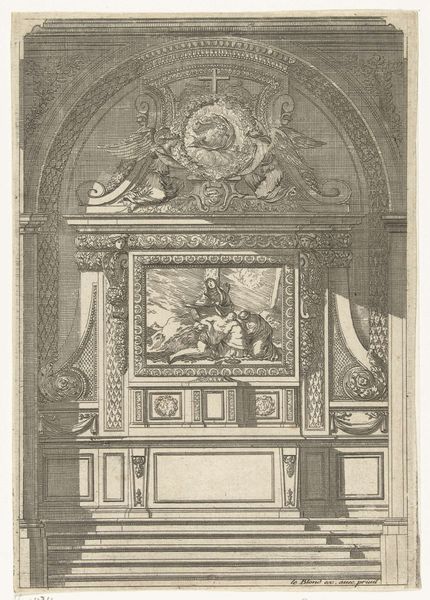
drawing, ornament, print, paper, architecture
#
drawing
#
ornament
#
toned paper
#
baroque
# print
#
paper
#
architecture
Dimensions: sheet: 8 1/2 x 3 7/8 in. (21.6 x 9.8 cm)
Copyright: Public Domain
Editor: This drawing by Simon Schijnvoet, titled "Design for a Wall Elevation" from around 1670 to 1727, depicts an ornate architectural design, presumably for a wall. It's on toned paper, and the limited color palette creates a really interesting, almost dreamlike, effect. I'm curious, what symbolism do you see embedded within the artwork's structure? Curator: It's interesting that you describe the colors as creating a 'dreamlike' effect. The Baroque style is all about visual impact. The symmetry, the cherubs, the overflowing urns—they speak to a cultural memory of power and wealth, mimicking ancient Roman grandeur, while at the same time alluding to Christian notions of heaven, echoed here by angelic figures and floral motifs representing paradise. Consider, too, the prominence given to heraldry: What feelings does it invoke? Editor: It evokes a sense of family history and lineage, almost like a proud declaration. It's interesting how different symbols reinforce ideas about social status and permanence. Do you think this drawing conveys the same message today? Curator: It certainly did then. For today's viewer, though, distanced by time, I imagine that recognition gives way to wonder. What we interpret as symbols representing power can also reflect more universal needs for permanence in society. After all, aren't we still using symbolism today, for national pride or corporate identity, for example? The image is also quite theatrical: the heavy drapes and sense of depth seem like a stage for a historical reenactment, which I would venture to say reinforces feelings that some things stay the same across the ages. Editor: I didn’t consider it that way. That's insightful - the "stage" is designed to emphasize particular aspects and convey their lasting impact. Thank you. I'm starting to see how symbols transform but still carry weight. Curator: Absolutely, and understanding that constant interplay, and re-interpretation, that’s key to engaging with art from any period.
Comments
No comments
Be the first to comment and join the conversation on the ultimate creative platform.
